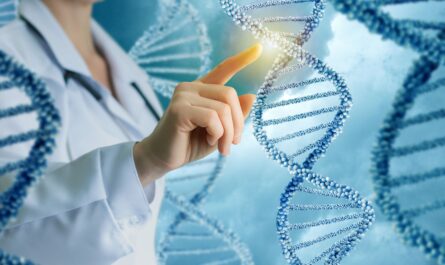Introduction
As the aquaculture industry continues to grow globally to meet the rising demand for seafood, risks from infectious aquatic diseases pose a major challenge for sustainability and food security. Fish raised in high densities are more susceptible to outbreaks that can devastate entire stocks and operations. While treatment options are limited once outbreaks occur, vaccination emerges as a primary disease prevention strategy adopted worldwide. In this article, we explore the evolution and use of fish vaccines and their importance in protecting aquaculture against production and economic losses.
Early Development of Fish Vaccines
The development of fish vaccines began in the 1960s alongside the growth of commercial aquaculture. Some of the earliest vaccines targeted viral nervous necrosis (VNN) in Japanese sea bass and viral hemorrhagic septicemia (VHS) in rainbow trout. These initial vaccines consisted of inactivated or attenuated live viruses administered via injection, similar to land animal vaccines. Through the 1970s and 80s, vaccines were developed for additional viral pathogens such as infectious pancreatic necrosis virus (IPNV), infectious hematopoietic necrosis (IHN), and infectious salmon anemia (ISA). Bacterial pathogens like vibriosis, streptococcosis, and furunculosis affecting salmonids were also targeted. These early vaccines helped control initial disease outbreaks and boosted industry growth.
Advancements in Vaccine Technology
In recent decades, vaccine production techniques have greatly advanced to improve efficacy, safety, and administration methods. Modified live vaccines utilizing infectious clone technology offer strong protection mimicking natural infection with no risk of disease spread. DNA vaccines containing pathogen genes have shown promise in bench trials. Advances in immunostimulants and delivery systems have led to more effective oral and immersion vaccines that are easier to administer in hatcheries and net pens. Newer vaccines have also been developed against emerging aquatic pathogens and combine protection against multiple diseases. Genomic advances enable reverse vaccinology approaches to rapidly design vaccines against new and evolving pathogens threatening aquaculture.
Regulatory landscape for fish vaccines
As fish vaccine usage expanded worldwide, harmonized global regulatory frameworks were needed. In the 1990s, the World Organization for Animal Health (OIE) began developing Aquatic Animal Health Code chapters on principles of vaccination and authorized approved fish vaccines. National regulatory agencies were established in key producing nations to review vaccine safety and efficacy data, issue marketing authorizations, and set labeling guidelines. The European Medicines Agency’s (EMA) centralized authorization procedure facilitates single approval for vaccines to be marketed across EU states. Major producing regions like Latin America, Southeast Asia, and North America have also strengthened national regulatory oversight and approved multiple locally produced and imported fish vaccines. Overall, coordinated regulations have supported a safe, effective global fish vaccine industry.
Vaccination Programs and their Benefits
Disease prevention vaccination programs are now routinely followed in major aquaculture sectors worldwide. For salmon farming, vaccines protect against viral and bacterial pathogens responsible for high losses. Protection begins at the egg/fry stage through immersion or injection, then booster doses are administered at seawater transfer. This full life cycle vaccination provides robust, long-lasting immunity critical for intensive outdoor farming where disease spread is difficult to control. For other freshwater sectors like trout and tilapia culture, mass vaccination at the hatchery or nursery phase is followed by stocking onto farms. Proper administration supported by water temperature, fish stress levels, and dosage are key to ensure high vaccine take and protection. Studies have demonstrated vaccines reduce mortality by 60-90%, increase harvest weights by 10-30%, and improve yields up to 30-40% – translating to significant economic benefits. Vaccination has thus become a cornerstone of sustainable and profitable aquaculture globally.
Future Prospects
While fish vaccines have made immense progress, continued innovation is still needed to achieve full protection against the wide host of emerging pathogens. Development of vaccines for new species raised in aquaculture like cod, barramundi and grouper is also expanding globally supported by advances in immunology. Adjuvants and vaccines stimulating non-specific immunity also show promise in protecting against multiple diseases. Current research efforts focus on thermostable oral vaccines, edible vaccines that confer immunity via the diet, and mucosal vaccines mimicking natural infection routes. Genomic tools now enable reverse vaccinology to rapidly design vaccines against evolving pathogens threatening aquaculture. Overall, continued advancements ensuring safe, effective and practical vaccines tailored for local aquaculture practices will be pivotal for a thriving blue revolution and global food security.
Conclusion
As the world’s population grows, aquaculture will play an increasingly vital role in meeting the rising demand for seafood while easing pressure on overexploited wild fisheries. However, infectious diseases remain a major threat to continued expansion and sustainability of the aquaculture industry. Fish vaccination programs have revolutionized disease prevention practices globally, drastically reducing mortality and economic losses. With continued innovations, vaccines will remain a preeminent tool supporting thriving aquaculture worldwide into the future. Harmonized regulations have facilitated a safe, effective global fish vaccine industry. Overall, vaccination has become a cornerstone of sustainable and profitable aquaculture globally.
*Note:
1. Source: Coherent Market Insights, Public sources, Desk research
2. We have leveraged AI tools to mine information and compile it



